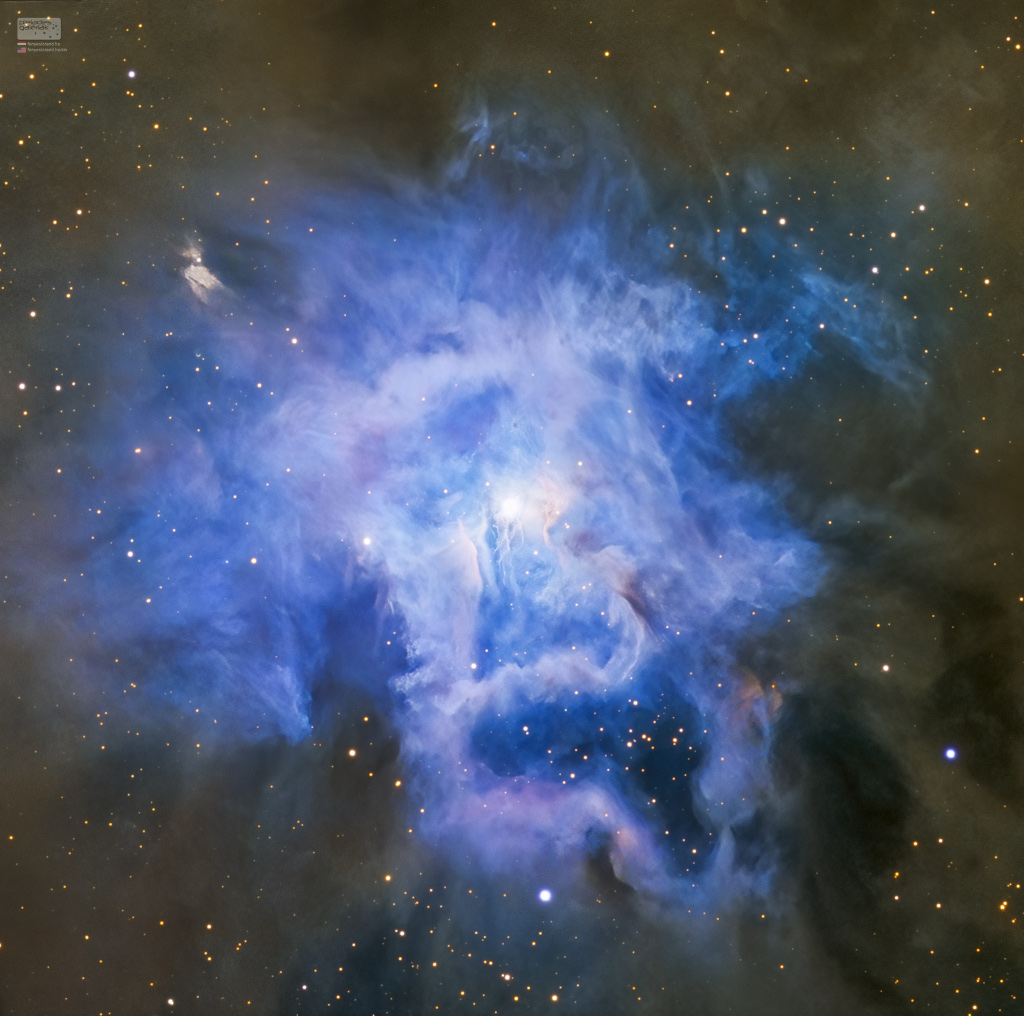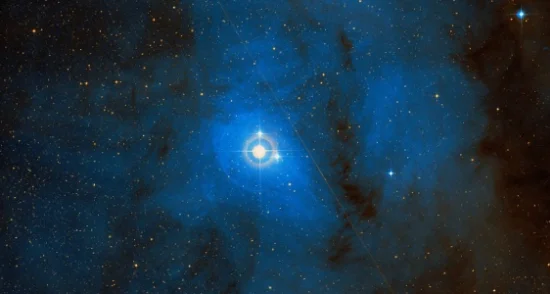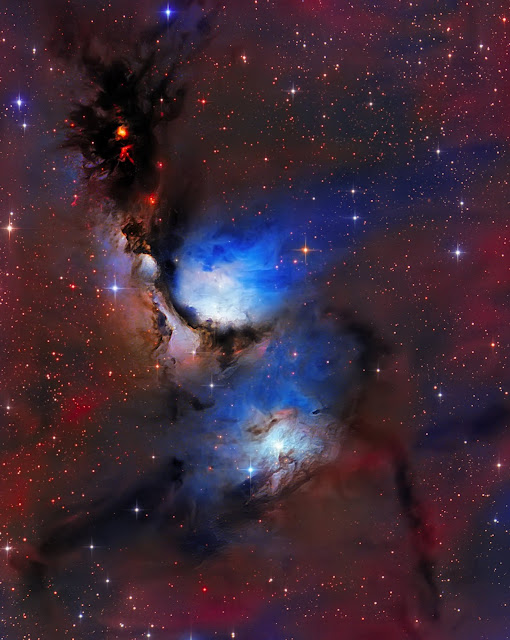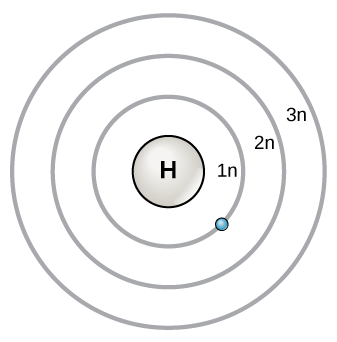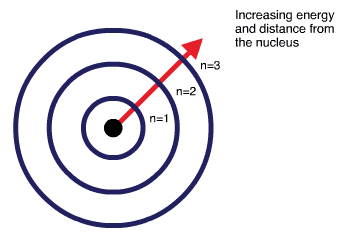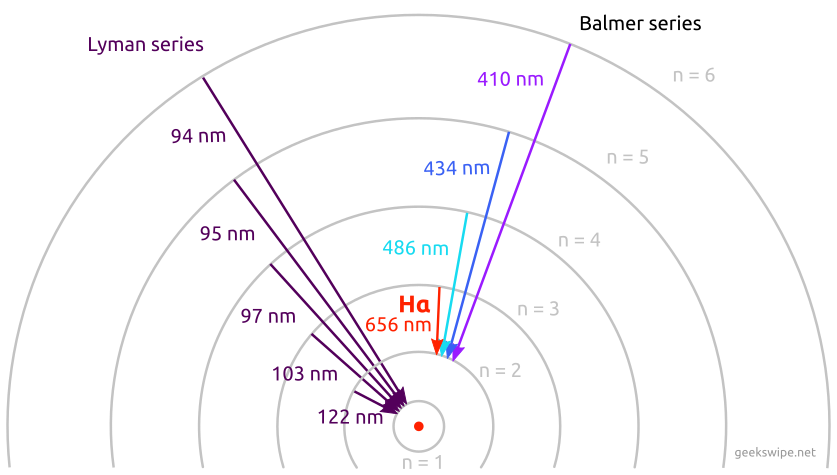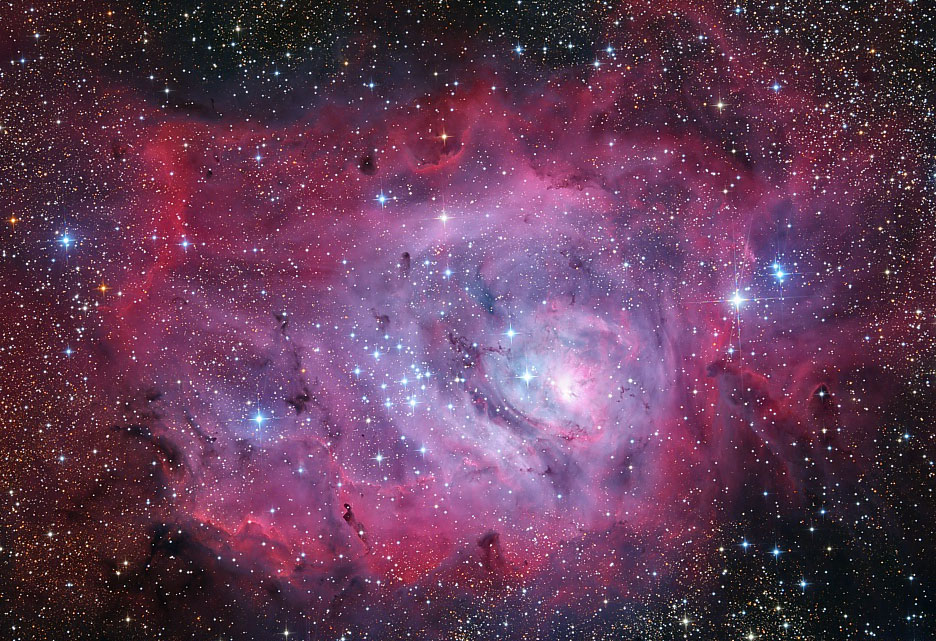Nitin Khuthia wrote: ↑Sun Sep 03, 2023 5:10 pm
this is my first post and as i cant find any place to start or join discussion i am using this. please guide me to right place if this not. my apologies beforehand.
with reference to the explanation
" the star's invisible ultraviolet radiation to visible red light. I"
i believe the nearest spectrum to ultraviolet is violet and not red so is it actually ultraviolet is converted to red or infrared converted to red?
if there is some mistake it may be corrected.
thanks
It works something like this.
The hydrogen atom consists of a proton and an electron that moves around the proton in "electron shells" that represent different energy levels.
Note!! This is a very simplified model of the hydrogen atom!
Anyway. The electron "prefers" the lowest-energy electron shell. But if the hydrogen atom is hit by a high-energy photon of ultraviolet light, the electron can be knocked into a higher electron shell.
But the electron will not stay in the higher electron shell. It will soon fall back to its lower electron shell again. But in order to do so, it has to shed the extra energy that it gained when it was knocked into the higher electron shell. Usually, it does so by emitting a photon of 656 nm, which is the red light of hydrogen alpha.
Sometimes the electron is knocked into even higher electron shells, and then it will emit a photon of a "bluer" wavelength as it falls down:
So when the electron is knocked "two shells up" it emits a cyan-colored photon of 486 nm as it falls down, which corresponds to hydrogen beta. Hydrogen gamma corresponds to a blue photon of 434 nm, and it is emitted when the electron falls down after having been knocked "three shells up". Hydrogen delta is a violet photon of 410 nm.
The Lagoon Nebula is a typical emission nebula, where very hot O-type stars emit torrents of ultraviolet photons which strike large numbers of hydrogen atoms and ionize them, which means that the electrons of the ionized hydrogen are knocked "one or more" levels up. As the electrons fall down again, they emit primarily red light of hydrogen alpha at 656 nm. However, and particularly closer to the hot stars, a number of electrons will be knocked "two levels up" and will emit cyan light of 486 nm as they fall down. (Occasionally some electrons will be knocked three or four levels up and emit blue or violet light, but this is rare.) The combination of 656 nm photons and 486 nm photons gives many emission nebulas a pink hue. In the case of the Lagoon Nebula, blue starlight from the hot stars will be reflected in dust grains in the nebula in the same way as in the Iris Nebula, which will add still more blue light to the inner Lagoon Nebula.
(As for the Lyman series, I haven't taken an interest in it, and I'm not prepared to talk about it. But the Lyman series is all about high-energy electrons emitting invisible high-energy ultraviolet photons.)
Ann
 NGC 7023: The Iris Nebula
NGC 7023: The Iris Nebula